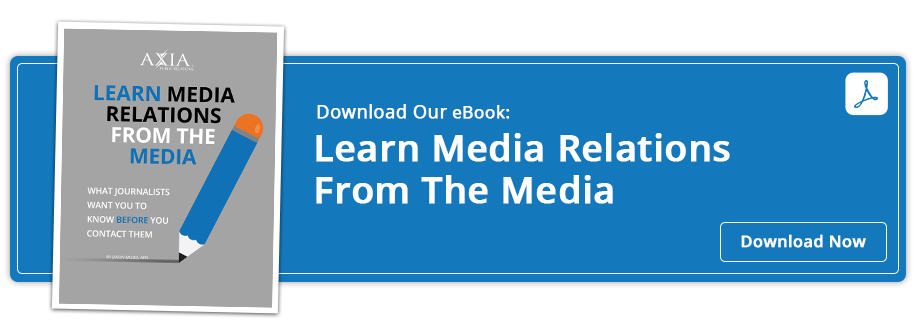Keep your news contacts updated so your company can quickly earn media coverage.
 A media list is a resource your company and PR team utilizes throughout a PR campaign to build relationships with contacts at specific outlets. A strategic media list will help the PR pro know who to share your company’s newsworthy information, such as the opening of a new location, new products, new hires, donations to nonprofits, and more.
A media list is a resource your company and PR team utilizes throughout a PR campaign to build relationships with contacts at specific outlets. A strategic media list will help the PR pro know who to share your company’s newsworthy information, such as the opening of a new location, new products, new hires, donations to nonprofits, and more.
Audio: Listen to this article.
Creating a media list can seem relatively easy. However, to ensure you fully review, evaluate, and develop your media list effectively, follow these five steps.
1. Connect
When creating media lists, consider what types of contacts you should reach for a story or news brief. Do you need to reach people in a specific geographic region, your company’s specific industry trade (B2B), or an enthusiast of your services (B2C)?
Your media list needs to reflect who you want to reach. If your company is located in the South, then you won’t have much success reaching out to media contacts in California. Unless the plan is to expand, media contacts will be most effective in your area.
2. Know
Many companies subscribe to a media database as their sole source for finding media contacts. You shouldn’t only use this to find media contacts, though. Double-check there aren’t new or other outlets not in the media database.
You need to know your company’s footprint and where you should seek media coverage. Don’t overlook building a relationship with a key outlet simply because your media database isn’t up to par.
When creating a media list, do your research. You don’t want to make your contacts angry with an incorrect assumption of a beat they cover or think you’re reaching out to a TV station when it’s a radio station. For example, a financial institution wouldn’t want to select a reporter who covers education.
3. Narrow
Your database should be your best friend when it comes to creating a media list. It will cast a wide net for your company to find media contacts, but also requires time to narrow down contacts and outlets that will work best with your company.
When narrowing your media list, focus on:
- What content the reporter and outlet covers. Consider reporters’ beats and what they have covered recently.
- What the primary medium is. Is it print news, television, blog, or podcasts? Some companies only desire to see their company in print news stories – something they can hold in their hands and frame. Other companies may want to reach a younger generation and see the benefit of being included in a podcast. Knowing what medium is important to your company and executives is necessary in narrowing down your media list.
- What the outlet’s circulation or audience size is, and how frequently the outlet publishes. If a website has 500 unique visitors per month compared to one with 30,000, then it could change your decision to pitch them.
4. Sort
Sorting your media list is important to keep your database clean and up to date. Sorting by outlet type, location, or topic can help you to stay on top of your media relationships, who you’ve connected with, and where you’ve earned media coverage.
5. Update
Media and news cycles are fluid with reporters moving around from various outlets or beats often. Updating your media list regularly is important because you must know the reporter you’re pitching to is still at the outlet. This will help you prevent egg on your face and propel a news story in a timely manner rather than holding up a potential story.
Just because you have a relationship with a reporter doesn’t mean they will inform you about leaving an outlet. They may post on their X (formerly Twitter) account or LinkedIn profile, which are both great platforms to follow and build relationships with media contacts.
A media database gives you a dynamic list in your software, meaning the list is automatically updated. This is an amazing bonus that wasn’t an option around 15 years ago. There are benefits, though, to keeping spreadsheets outside the database. This includes knowing if someone has left an organization and when you may have previously worked with a reporter.
Don’t let creating a robust media list worry you. Remember these five steps and get started building relationships with media contacts.
For more tips like these, register for Axia’s free 60-Second Impact, packed with tips and tools on how to use PR to promote and grow your company.
Photo by picjumbo.com
Topics: media relations, earned media, news media


Comment on This Article